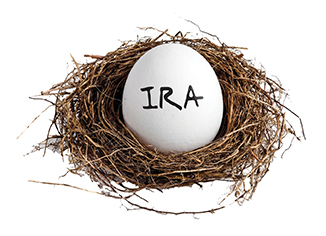Inherited IRAs: Know the Rules
Posted on February 28, 2015 by bob in MoneyWise
IRAs are a great tool for retirement. Thanks to their popularity, you might be a beneficiary of someone’s IRA. If so, you need to know some of the rules affecting inherited IRAs. (The rules for Roth IRAs are different and this article does not apply to them.)
Much of what you need to know hinges on (a) the age at death of the deceased former owner, (b) your age, and (c) whether or not the former owner was your spouse. Age matters for two reasons. First, most IRA distributions prior to the owner’s age 59½ are subject to a 10% penalty. Second, IRA distributions must begin by April 1 of the year after the owner reaches age 70½ (“required  beginning date”).
beginning date”).
You also need to know that “required minimum distributions” (RMDs) from the IRA are required by law at different times depending on the ownership of the IRA. To further complicate matters, the method for calculating the RMD varies depending on circumstances. The penalty for not taking the correct RMD is 50% of the required amount not taken. If you inherit an IRA, determine if the former owner had to take an RMD in his year of death. If so and it has not been taken, you must do so, based on his age, by 12/31 of his year of death.
Spouse Beneficiary
If you are at least 59½ or if you will not have to draw on the IRA until you reach that age, you should probably roll the inherited account into an IRA in your own name. The account will then be treated like any other IRA in your name. The obligation to take an RMD and the calculation of the amount will thereafter be based on your age.
If your spouse was 59½ and you are likely to draw on the IRA before the year you reach 59½, you can leave the money in your spouse’s IRA and take withdrawals as the beneficiary without facing a 10% early withdrawal penalty. Wait until you are 59½ before moving the IRA into your own name.
Non-spouse Individual Beneficiary
A non-spouse beneficiary may not move an inherited IRA into her name. It must be listed as an inherited IRA and you may choose from the two methods below to determine the RMD which you must take annually starting in the year after death. The slowest method generally provides the greatest value, so you want the highest life expectancy. The RMD is the 12/31 IRA balance the prior year divided by life expectancy in the current year.
1. Calculate a hypothetical life expectancy for the deceased owner using the IRS table to determine his life expectancy as of his birthday in the year of death. Reduce that number by 1 for each succeeding year.
2. Look up your life expectancy in the single life table (no other table is valid) published by the IRS individual.
While your custodian will probably be happy to calculate this for you, it is a good idea for you to look at options 1 and 2 to decide what works best for you rather than letting someone else make the choice for you.
Multiple Beneficiaries and Trust or Entity
Beneficiaries
If an inherited IRA names more than one beneficiary, split the account into separate IRAs in the proper amount for each beneficiary. Then proceed as outlined above. If a trust or other entity is the beneficiary, consult an expert before taking action.
With inherited IRAs as in other matters, it is best to chart your course carefully before taking action. Once taken, many actions in this field are irreversible, so choose wisely. And as always, it is a good idea to consult with a qualified professional for specific advice.
Alan Wallace, CFA, ChFC, CLU, is a Senior Private Wealth Advisor for Ronald Blue & Co.’s Montgomery office, www.ronblue.com/location-al. He can be reached at 334-270-5960, or by e-mail at alan.wallace@ronblue.com.










